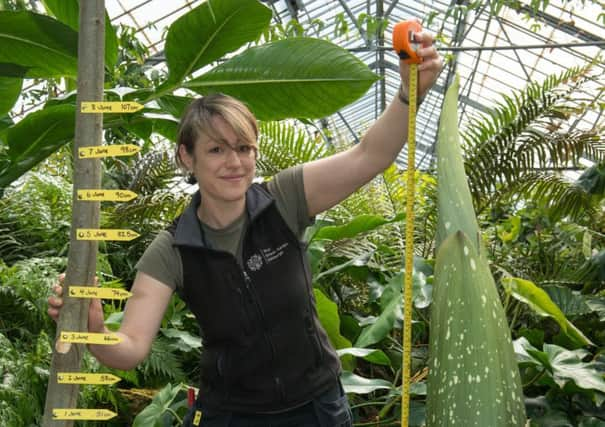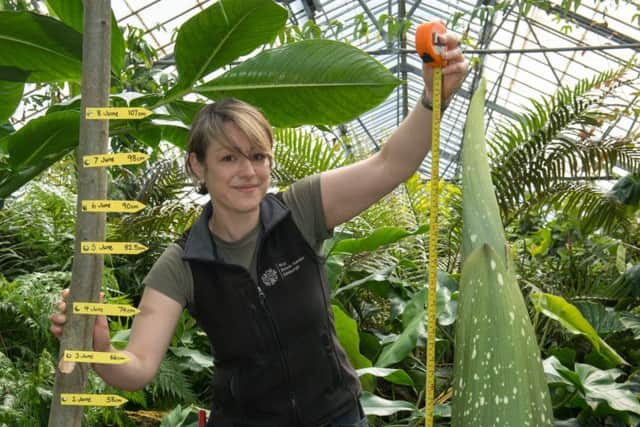Is mysterious ‘stinky plant’ about to bloom?


But if the Titan Arum flowers for the first time in Scotland, visitors are expected to flock to the Royal Botanic Garden in their thousands to catch a glimpse – and a whiff.
And excitement is growing almost as fast as the plant itself, which has seen a growth spurt of eight centimetres every day.
Advertisement
Hide AdAdvertisement
Hide AdExperts have been keeping a close eye on the plant, which only produces its distinctive bloom every seven to ten years.


Staff still do not know whether the bud will produce a flower or a leaf – though horticulturist Sadie Barber said it “looked a bit leafy”.
However, she refused to rule out the possibility it could flower for the first time in its 13-year lifespan “by the end of this week or the beginning of next”.
She added: “You look at the corm and ask ‘Is it big enough?’ and ‘Is it ready?’. The answer to that is ‘Yes it is’.
“However, it was also ready five years ago.
Advertisement
Hide AdAdvertisement
Hide Ad“It’s very difficult to predict and there are all kinds of reasons why it might not have flowered.
“It could be the Scottish light levels or the temperatures. It’s such a guessing game.”
Meanwhile, staff at the visitor centre have sought advice from Switzerland to cope with a surge in visitor numbers that a flowering of the Titan Arum would bring.
In September of last year more than 25,000 visitors came to see the plant bloom in Basel’s botanical garden while a similar flowering in Melbourne, Australia attracted crowds of 10,000 people.
Advertisement
Hide AdAdvertisement
Hide AdA spokeswoman from the RBGE confirmed that “additional stewards” would be drafted in, while extra sales points for tickets would be opened if the plant blooms in the coming days.
However, visitors would not have to pay more than the standard £5 for adults and £4 for concessions to enter the glasshouse.
The plant is also called Amorphophallus titanum, which translates as “misshapen penis” – but has been nicknamed “New Reekie” by Botanic staff. The brief bloom of around 48 hours is followed by a “stench” phase of up to ten days when the plant releases powerful odours designed to attract pollinators such as beetles. It is one of five plants of the same species at the visitor attraction but this is the oldest.
In its 12 years at the Botanics the corm has produced seven leaves, the tallest of which was nearly 14ft. The seed was originally sown in the Netherlands in 2002 and RBGE received the corm in 2003, which was then about the size of an orange.
Advertisement
Hide AdAdvertisement
Hide AdThe last time the corm was measured in 2010 it weighed 153.9kg, making it the largest ever recorded. The plant is native to the rainforests of western Sumatra, Indonesia, and has been classified as “vulnerable” due to loss of habitat.
It was first discovered in 1878 by Italian botanist Odoardo Beccari and flowered for the first time in cultivation at the Royal Botanic Garden in Kew on June 22, 1889.